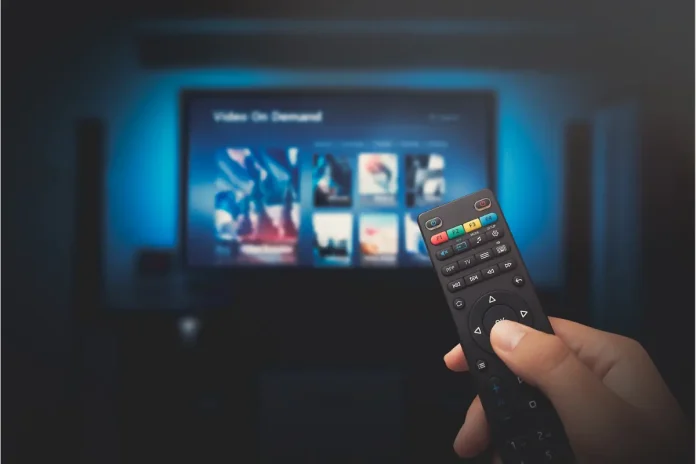
Television advertising remains a powerful medium for reaching audiences in the United States. However, understanding the costs associated with TV ads can be complex. Many advertisers often ask, how much does a TV ad cost. We will explore the various factors that influence TV ad pricing, providing insights for advertisers looking to maximize their budgets and achieve their marketing goals.
Understanding TV Advertising Costs
The Basics of TV Ad Pricing
TV ad costs can vary significantly based on several factors, including the time slot, network, and audience reach. Here’s a brief overview of the fundamental elements that impact pricing:
- Time Slot: Ads during prime time slots (typically 8 PM to 11 PM) are generally more expensive than those aired during off-peak hours. Prime time offers higher viewership, leading to increased demand and, consequently, higher prices.
- Network and Program: Major networks like NBC, ABC, and CBS charge more for ad placements due to their broad reach and established audiences. Specific programs, especially popular shows or sporting events, can command premium rates.
- Ad Length: The standard TV ad duration is typically 30 seconds, but shorter (15 seconds) and longer (60 seconds) spots are also available. Prices scale according to the length of the ad, with longer ads usually costing more.
- Audience Targeting: Advertisers can often target specific demographics, which can influence costs. Ads aimed at niche markets may be priced differently than those targeting a broader audience.
Average Costs of TV Ads
Understanding how much does a TV ad cost requires looking at averages across various networks and time slots. Here’s a breakdown of typical costs:
- National Networks: National television ad rates can range from $5,000 to $100,000 for a 30-second spot during prime time, depending on the network and the program.
- Cable Networks: Cable networks generally offer lower rates, averaging between $1,000 and $25,000 for similar time slots.
- Local TV Ads: Local advertisements typically cost between $200 and $5,000 for a 30-second spot, depending on the market size and time slot.
The Role of Connected TV Advertising
As digital platforms continue to grow, connected TV (CTV) advertising has emerged as a crucial component of modern marketing strategies. Here’s how CTV advertising fits into the overall landscape:
- Cost-Effective Options: CTV ads can often be more cost-effective than traditional TV ads, providing advertisers with the ability to reach specific audiences through targeted campaigns. Advertisers can expect to pay less than traditional TV costs while still achieving strong engagement.
- Audience Measurement: Connected TV platforms offer advanced analytics, allowing advertisers to track performance metrics such as view-through rates and conversions. This data can help optimize ad spend and improve overall ROI.
- Integration with Digital Marketing: CTV advertising allows for seamless integration with digital marketing strategies. Advertisers can run concurrent campaigns across platforms, maximizing reach and engagement.

Factors Influencing TV Ad Costs
To understand how much a TV ad costs, advertisers must consider various factors that can influence pricing:
1. Seasonality and Timing
- Peak Seasons: Costs can spike during peak advertising seasons, such as holidays or major events (e.g., the Super Bowl, or the Olympics). Advertisers should plan their campaigns accordingly to avoid inflated prices.
- Day of the Week: Advertising costs can also vary by day. For example, ads on weekdays might be less expensive than those on weekends, particularly for programs with high viewer traffic.
2. Competition and Demand
- Market Demand: If multiple advertisers are vying for the same time slot or program, prices can increase due to competition. This is particularly relevant during major sporting events or popular shows.
- Negotiation Opportunities: Advertisers may have room to negotiate prices, especially for bulk purchases or long-term contracts.
3. Ad Production Costs
- Creative Development: Beyond the media buying costs, production costs for creating the ad itself can range from a few hundred to several thousand dollars, depending on the complexity and quality of the production.
- Talent and Licensing: Hiring well-known actors or securing music licenses can significantly increase production costs. Advertisers should budget accordingly.
Types of TV Advertising
Understanding the different types of TV advertising can also help in estimating costs. Here are some common formats:
1. Traditional TV Advertising
- Broadcast Advertising: National networks such as ABC, NBC, and CBS offer broadcast advertising, which can be costly but provides wide reach.
- Cable Advertising: Cable channels typically charge less than broadcast networks but can target niche audiences effectively.
2. Digital TV Advertising
- Connected TV Advertising: As previously mentioned, CTV allows advertisers to run ads on streaming platforms and smart TVs, often at lower costs compared to traditional TV.
- OTT Advertising: Over-the-top (OTT) services like Hulu or Netflix allow for targeted advertising, often based on viewer behavior and preferences.
3. Local TV Advertising
- Local Broadcasts: Advertisers looking to target specific geographic areas can take advantage of local broadcasts, which generally offer lower rates and more localized audience targeting.

Budgeting for TV Ads
When planning a TV ad campaign, budgeting is critical. Here’s how to create an effective budget:
1. Set Clear Objectives
- Define the goals of your campaign, whether it’s brand awareness, lead generation, or sales conversion. This clarity will guide your budget allocation.
2. Allocate Funds Appropriately
- Consider costs associated with both media buying and production. Allocate funds to cover all aspects of the campaign, including creative development, media buying, and measurement.
3. Monitor and Adjust
- Regularly monitor the performance of your ad campaign to assess effectiveness and adjust your budget accordingly. This will help optimize your return on investment.
The Future of TV Advertising
Trends Influencing TV Ad Costs
- Rise of Streaming Services: The growth of streaming platforms is shifting the advertising landscape. Advertisers are increasingly moving toward CTV and OTT channels, where they can leverage data-driven targeting.
- Programmatic Advertising: Programmatic buying is changing the way advertisers purchase TV ads, allowing for more efficient and targeted ad placements. This can lead to lower costs and improved ROI.
- Increased Focus on Analytics: As advertisers seek to understand their audience better, analytics play a crucial role in shaping TV ad strategies. Data-driven insights can lead to more effective ad placements and budgeting.
Conclusion
Understanding how much does a TV ad cost is essential for advertisers looking to make informed decisions about their marketing strategies. By considering factors such as timing, competition, and the evolving landscape of connected TV and digital advertising, brands can optimize their ad spend and achieve their campaign goals effectively. As the industry continues to evolve, staying informed about trends and pricing dynamics will be critical for success in television advertising.
FURTHER READING









